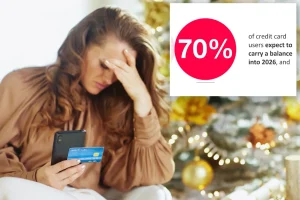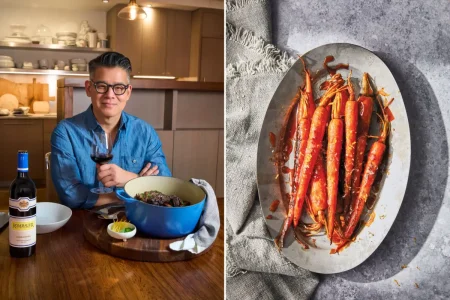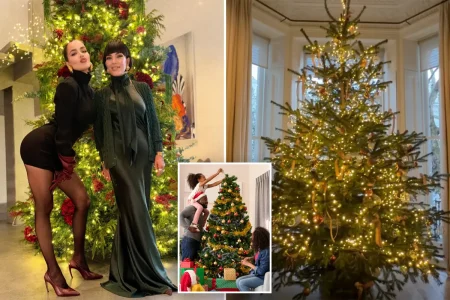The Unexpected Loneliness of Halloween: Singles’ Silent Struggle
In a surprising revelation that challenges our perception of holiday blues, Halloween—a day typically associated with fun, candy, and spooky festivities—has emerged as the loneliest day of the year for single people, surpassing even Valentine’s Day in emotional difficulty. A recent Dating.com survey of 1,000 singles paints a poignant picture of isolation beneath the colorful costumes and cheerful decorations that characterize October 31st. While many might assume that Valentine’s Day or New Year’s Eve would trigger the greatest feelings of loneliness among singles, the reality is quite different, highlighting an often overlooked emotional dimension of this popular holiday.
The statistics from the survey are startling: 59% of single participants identified Halloween as one of the most emotionally challenging holidays of the year, with 57% ranking it as worse than Valentine’s Day for feelings of isolation. Perhaps most heartbreaking is the revelation that 79% of singles experience loneliness on Halloween, and over half of the respondents admitted to crying when opening their doors to trick-or-treating families. This innocent tradition, meant to bring joy and community connection, inadvertently serves as a painful reminder of family structures or partnerships that singles may desire but don’t currently have. The simple act of welcoming costumed children and their parents to the doorstep becomes an unexpected emotional trigger, transforming what should be a moment of community celebration into one of personal reflection and sometimes sorrow.
Social media significantly exacerbates these feelings of isolation, with 73% of singles reporting that platforms like Instagram and Facebook intensify their Halloween loneliness. The constant stream of couple costumes, family pumpkin patch photos, and group celebration posts creates a virtual showcase of togetherness that can make solitary individuals feel excluded from the collective experience. This digital dimension adds another layer to the complexity of modern loneliness—not only are singles physically alone in many cases, but they’re also bombarded with digital evidence of others’ connections, creating a double isolation that spans both real and virtual worlds. The contrast between their private experience and the public display of others’ togetherness becomes particularly stark on holidays like Halloween that emphasize social gathering and shared rituals.
Perhaps most concerning is how singles cope with these feelings: 77% admitted to pretending to have plans on Halloween, while 62% rarely disclose their true emotions to friends and family, instead maintaining a facade of contentment despite feeling deeply lonely. This pattern of emotional concealment reveals how stigmatized feelings of loneliness remain in our society, where admitting to such emotions is often perceived as weakness or social inadequacy rather than a normal human experience. The pressure to appear socially fulfilled leads many singles to engage in elaborate performances of happiness during holidays, creating exhausting emotional labor that compounds their isolation. Behind closed doors, after pretending to have plans or declining invitations with fabricated excuses, these individuals often face the reality of their solitude in silence, without support systems aware of their struggle.
While Halloween’s emotional impact comes as a surprise, it serves as a prelude to the broader holiday season, which mental health professionals have long recognized as a challenging period for many. The approaching winter holidays from Thanksgiving through New Year’s bring even more emphasis on family gatherings, traditional celebrations, and coupled experiences. This seasonal pattern coincides with what health officials have identified as a loneliness epidemic in the United States, particularly pronounced in urban centers like New York City, where despite the dense population, more than half of residents report feeling lonely “some of the time” according to the city’s health department. The irony of feeling most alone while surrounded by millions highlights the distinction between physical proximity and meaningful connection—a gap that holidays often throw into sharp relief.
Former U.S. Surgeon General Vivek Murthy’s warning about social disconnection carries particular resonance in this context: the health impact of loneliness rivals that of smoking up to 15 cigarettes daily, exceeding even the risks associated with obesity and physical inactivity. His recommendation for people to take “small steps every day to strengthen our relationships” points to a broader public health approach to addressing loneliness. As we consider the unexpected emotional landscape of Halloween for singles, this serves as a reminder that beneath the surface of many celebrations lie complex emotional experiences that vary widely across different life circumstances. Recognition of these diverse experiences might be the first step toward creating more inclusive holiday traditions that acknowledge and accommodate the full spectrum of human connection—from solitude to partnership to family life—allowing everyone to find meaning and joy in seasonal celebrations, regardless of their relationship status.















